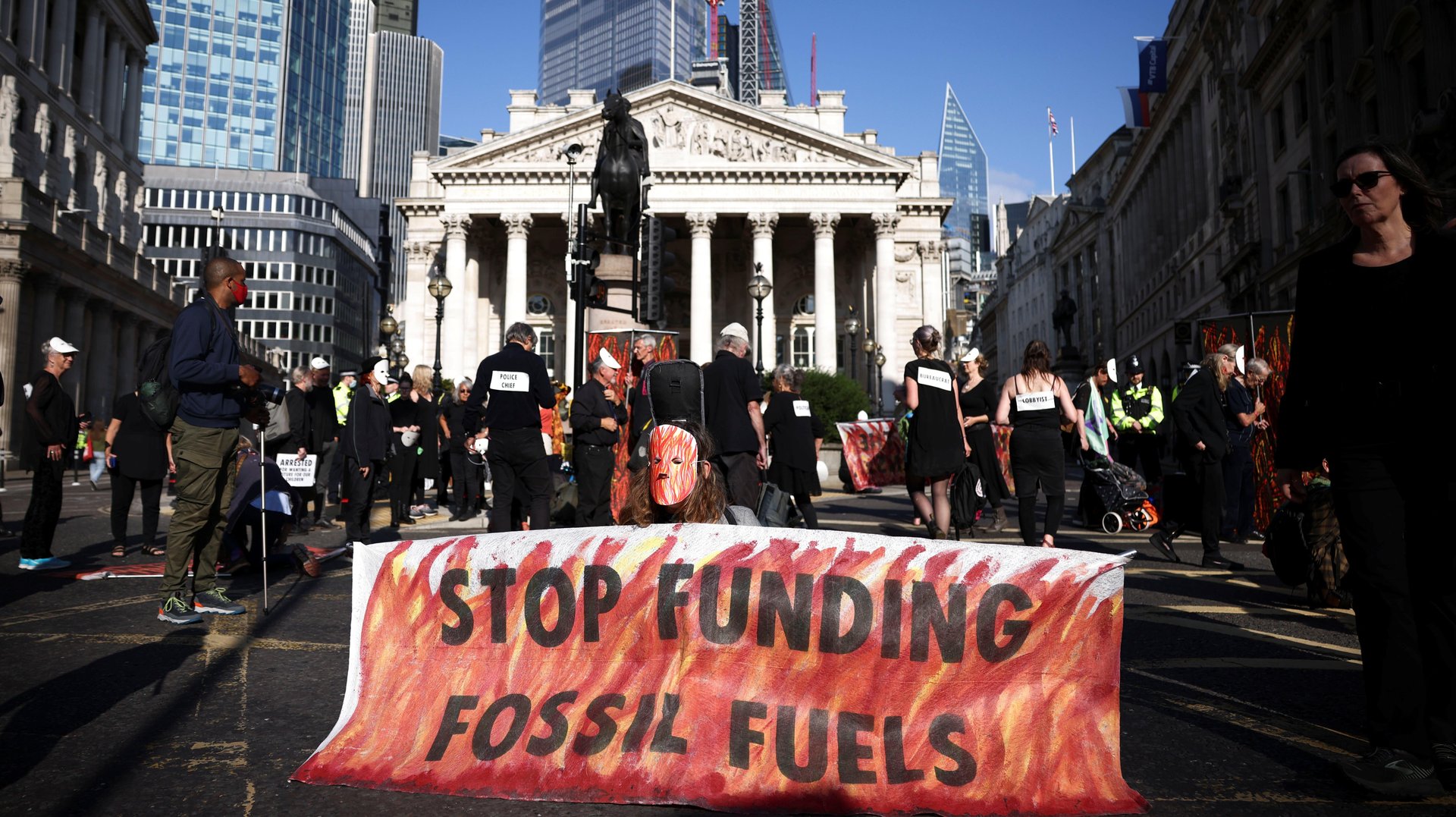Banks are seeking to dilute their accounting standards for carbon emissions
The working group includes Morgan Stanley, Barclays, BofA, Citigroup, HSBC, BNP Paribas, NatWest, Standard Chartered

Major banks are close to working out the details of how they want to account for carbon emissions linked to their capital markets business. The decision they are reaching is to simply exclude part of the business from the calculation.
Suggested Reading
Earlier this month, a group of banks working to standardize reporting voted to exclude two-thirds of emissions from stock and bond underwriting activity from their own footprint, Reuters first reported yesterday (July 30), citing three people familiar with the matter.
Related Content
The working group formed within the Partnership for Carbon Accounting Financials (PCAF) thinks the 33% threshold will create a buffer against double counting, since bond and stock investors will also separately account for some of the emissions generated by the financing activities in their own carbon footprints. The expectation in carbon accounting is that every company measures the carbon emissions they are directly or indirectly responsible for due to their activities, and undercounting some of those emissions risks unbalancing calculations across the market.
The criteria, originally expected in 2022, has already been long delayed as banks have struggled to converge their divergent views. The PCAF board is set to have the final say on whether the 33% rule will be adopted, but it’s reportedly in favor of setting a standard and get the ball rolling over further extending discussions. Without a universal rubric, it’s difficult to assess if banks are making good on their emissions reduction targets and whether they are publishing robust disclosures.
Further down the line, there’s bound to be a debate around whether capital market-related emissions and lending-related emissions should be combined into a single target or treated separately. The Science Based Targets Initiative, backed by the United Nations and environmental groups, is developing a framework to address that.
Banks’ capital markets emissions, by the digits
8: Banks—Morgan Stanley, Barclays, Bank of America, Citigroup, HSBC, BNP Paribas, NatWest and Standard Chartered—that are part of PCAF’s working group
$266 billion: How much the six biggest US banks—JPMorgan Chase, Citi, Bank of America, Wells Fargo, Morgan Stanley, and Goldman Sachs—have underwritten in new bond and equity issuances for 30 of the top fossil fuel expansion companies in the world between 2016 and 2022, according to environmental group Sierra Club
61%: How much of the financing provided by the six biggest US banks for top fossil fuel companies came from capital markets rather than direct lending between 2016 and 2022, according to Sierra Club’s analysis, which “reveals a hidden pipeline for fossil fuel financing through the banks’ underwriting of bonds and equities for polluting companies.”
100%: How much of the capital markets-related carbon footprint environmental activists want banks to account for, according to environmental activists. It already does so with loans.
33%: How much of the capital markets-linked emissions the group of banks are suggesting they account for
Quotable: Banks are downplaying their role in facilitated emissions
“The reality is, without banks, fossil fuel companies cannot raise money through capital markets. By downplaying their role in capital markets and refusing to include facilitated emissions in their climate targets, big US banks are intentionally sidestepping a major source of real-world emissions and making it impossible to meet their own net-zero commitments.”—Adele Shraiman, senior campaign strategist with the Sierra Club’s Fossil-Free finance campaign, on July 24, 2023
Rabbit hole: Banks blur net-zero emissions targets
Accounting for all of the capital markets emissions would undoubtedly set banks a few steps back in their net zero by 2050 targets. But it’s necessary to paint a true picture of what is now a half-baked transition to sustainability.
For instance, three US banks—Citi, Bank of America, and Morgan Stanley—are quick to take green credit, counting all underwriting activities for clean energy toward their sustainable finance pledges. However, they only apply emissions reduction targets to their lending portfolio, leaving out high-carbon financing and emissions reduction targets for polluting sectors on the capital side.
“At minimum, banks should use consistent methodologies for all of their targets to avoid mischaracterizing their financing activities and their climate impacts — both good and bad,” the Sierra Club noted.
One more thing: Holding banks accountable
If and when it passes, the reporting threshold will be a voluntary, industry-led guidance. Ensuring banks are being transparent and credible requires more oversight. Ultimately, governments will have to intervene.
Related stories
💸 These banks are the biggest funders of the fossil fuel industry